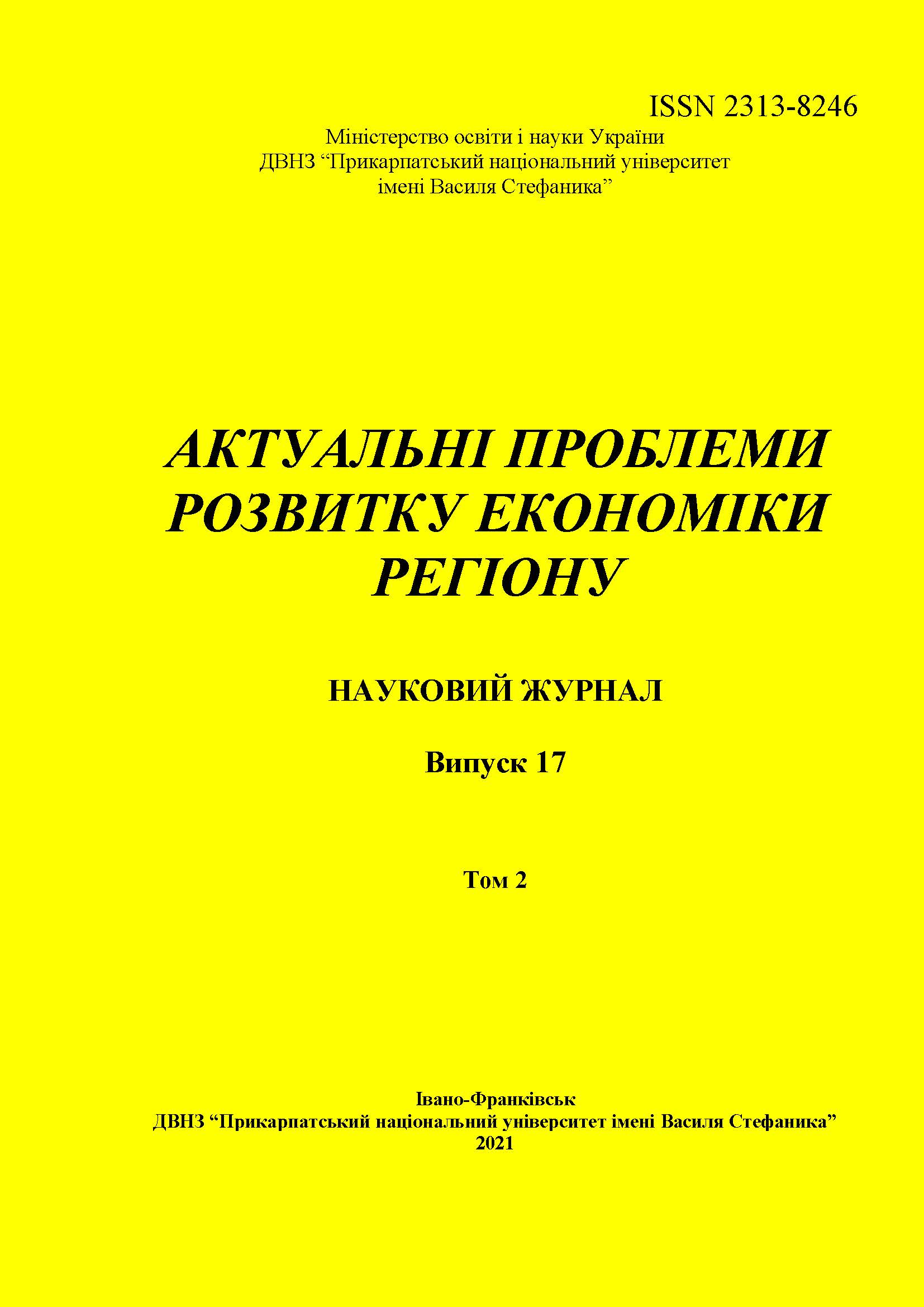CONSEQUENCES OF LAND REFORM IN UKRAINE ON THE EXAMPLE OF GEORGIA AND MOLDOVA
DOI:
https://doi.org/10.15330/apred.2.17.135-148Keywords:
land reform, a moratorium on land sales, Georgia land reform, Moldova land reform, Ukraine land reform, small households efficiency, land distribution, open land market, UkraineAbstract
The article is aimed at investigating the expediency of land reform in Ukraine. The process and consequences of land reforms in Georgia and Moldova are considered. The indicators of development of the agricultural sector and the degree of involvement of the population in it are revealed. The world experience of land distribution was analysed. The most effective strategy of land reform development by analysing the research in the dependence of efficiency of land plots utilization on the size of households that cultivate them was revealed. The efficiency of agroholdings and family farms is compared. Determined trends in the distribution and size of plots in developed countries. Analysed the gradual adoption of decisions in the development of land reform and their effects on the success of such reform in Georgia and Moldova.
The current decisions of the Ukrainian government on the way to reforming land distribution and use of land resources are considered. Parallels of the current Ukrainian land reform based on the experience of Moldova and Georgia are identified. The assumption of success and expediency of the decisions taken, which could potentially come into force when the Verkhovna Rada of Ukraine discusses the format of the land reform, was put forward. Analysed the further development of the land sector according to the gradual entry into force of the adopted legislation. The issues of expediency of opening the land market to foreigners were considered. Penetrated the experience of international partners and countries already decided on the admission or non-admission of foreign contractors to the national land market. The degree of development of accounting and inventory of existing land plots and completeness of filling the land cadastre of the three countries under study was determined.
The research method was the analysis of the current land system of Georgia and Moldova by studying articles on the dynamics of changes in local legislation. The main economic indicators that may indicate the degree of success of the reforms in these countries are considered. Due to such indicators, a detailed analysis of the latest changes in the legislation of Ukraine predicted and assessed the feasibility of the reforms.
References
2. GDP per capita, PPP (current international $) - Europe & Central Asia. World bank, data.worldbank.org/indicator/NY.GDP.PCAP.PP.CD?locations=Z7. Accessed 01 Nov. 2021.
3. The Impact of Labour Migration on the Ukrainian Economy. World Bank, /ec.europa.eu/info/sites/default/files/economy-finance/dp123_en.pdf. Accessed 01 Nov. 2021.
4. Georgia: Law of the Republic of Georgia "On Ownership" (annulled). Georgian Parliament, www.refworld.org/docid/3ae6b51814.html. Accessed 01 Nov. 2021.
5. Georgia: Law No. 743-Iis of 1997 on Privatization of State-Owned Property (annulled). Georgian Parliament,www.refworld.org/docid/3ae6b5https://www.refworld.org/docid/3ae6b51514.html1514.html. Accessed 01 Nov. 2021
6. Employment in agriculture (% of total employment) (modeled ILO estimate) - Ukraine, Georgia, Moldova, Europe & Central Asia. World Bank, data.worldbank.org/indicator/SL.AGR.EMPL.ZS?locations=UA-GE-MD-Z7&view=chart. Accessed 01 Nov. 2021.
7. Law No. 1663-Ic of 1998 on declaration of private property of non-agricultural land conceded in lease to physical and legal persons. Georgian Parliament, www.ecolex.org/details/legislation/law-no-1663-ic-of-1998-on-declaration-of-private-property-of-non-agricultural-land-conceded-in-lease-to-physical-and-legal-persons-lex-faoc042198/ Accessed 01 Nov. 2021.
8. Land reform and farm restructuring in Moldova. World Bank, elibrary.worldbank.org/doi/pdf/10.1596/0-8213-4317-3. Accessed 01 Nov. 2021.
9. Csaki, C., and Z. Lerman. “Land Reform and Farm Restructuring in Moldova: A Real Breakthrough?” doi.org/10.1080/10758216.2002.11655969. Accessed 01 Nov. 2021.
10. Land Directory of Ukraine 2020. Agropolit, agropolit.com/storage/2020/Zemelniy_dovidnyk_2020.pdf. Accessed 01 Nov. 2021.
11. Land Code of the Republic of Moldova. Parliament of Moldova, www.ecolex.org/details/legislation/land-code-of-the-republic-of-moldova-lex-faoc009809/ Accessed 01 Nov. 2021.
12. Economic prosperity initiative: agriculture sector policy environment assessment. USAID, land-links.org/wp-content/uploads/2018/03/USAID_Land_Tenure_EPI_Agriculture_Sector_Policy_Environment_Assessment.pdf. Accessed 01 Nov. 2021.
13. Rosset, P. “The Multiple Functions and Benefits of Small Farm Agriculture in the Context of Global Trade Negotiations.” Researchgate, https://www.researchgate.net/publication/233676804_The_Multiple_Functions_and_Benefits_of_Small_Farm_Agriculture_in_the_Context_of_Global_Trade_Negotiations. Accessed 01 Nov. 2021.
14. Quinlan, Paul D. “Moldova under Lucinschi.” Demokratizatsiya, demokratizatsiya.pub/archives/10-1_Quinlan.PDF. Accessed 01 Nov. 2021.
15. “Moldova: Agricultural Policy Notes Policy Priorities for Agricultural Development.” World Bank, openknowledge.worldbank.org/handle/10986/19432?show=full. Accessed 01 Nov. 2021.
16. National Fund for Agriculture and Rural Development (NFARD) Subsidy Regulation 2017–2021 Support Measures. NFARD, aipa.gov.md/sites/default/files/Brosura_AIPA_en.pdf . Accessed 01 Nov. 2021.
17. “Moldova agricultural policy notes.” World Bank, documents1.worldbank.org/curated/en/100541468273910401/pdf/421410Moldova010markets1en01PUBLIC1.pdf. Accessed 01 Nov. 2021.
18. About arable land reform in the Republic of Georgia. Georgian Law, extwprlegs1.fao.org/docs/pdf/geo21590.pdf. Accessed 01 Nov. 2021.
19. Draft Law on Amendments to the Land Code of Ukraine and Other Legislative Acts on Improving the System of Management and Deregulation in the Sphere of Land Relations.Verkhovna Rada of Ukraine, w1.c1.rada.gov.ua/pls/zweb2/webproc4_1?pf3511=66970. Accessed 01 Nov. 2021.
20. “Arable land (hectares per person) - Ukraine, Georgia, Moldova, Europe & Central Asia.” World Bank, data.worldbank.org/indicator/AG.LND.ARBL.HA.PC?locations=UA-GE-MD-Z7&view=chart. Accessed 01 Nov. 2021.
21. Statistical Atlas of Ukraine. Statistical Bureau of Ukraine. database.ukrcensus.gov.ua/dw_regions/pdf/%D0%A3%D0%BA%D1%80%D0%B0%D1%97%D0%BD%D0%B0.pdf. Accessed 01 Nov. 2021.
22. “Rural population (% of total population) - Ukraine, Georgia, Moldova, Europe & Central Asia.” World Bank, data.worldbank.org/indicator/SP.RUR.TOTL.ZS?locations=UA-GE-MD-Z7&view=chart. Accessed 01 Nov. 2021.
23. “Cereal yield (kg per hectare) - Ukraine, Georgia, Moldova, Europe & Central Asia.” World Bank, worldbank.org/indicator/AG.YLD.CREL.KG?end=2018&locations=UA-GE-MD-Z7&start=1995&view=chart. Accessed 01 Nov. 2021.
Downloads
Published
Issue
Section
License
- Authors retain copyright and grant the journal right of first publication with the work simultaneously licensed under a Creative Commons Attribution NonCommercial NoDerivs 4.0 Unported License that allows others to share the work with an acknowledgement of the work's authorship and initial publication in this journal.
- Authors are able to enter into separate, additional contractual arrangements for the non-exclusive distribution of the journal's published version of the work (e.g., post it to an institutional repository or publish it in a book), with an acknowledgement of its initial publication in this journal.
- Authors are permitted and encouraged to post their work online (e.g., in institutional repositories or on their website) prior to and during the submission process, as it can lead to productive exchanges, as well as earlier and greater citation of published work (See The Effect of Open Access)


